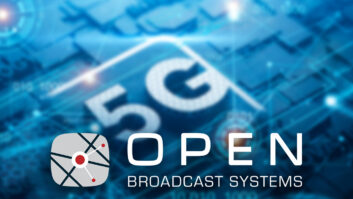In recent years, the broadcast industry has experienced a major shift toward file-based video strategies for content storage, post production and playout. This has resulted in an inevitable need to serve, manage and distribute files at all stages of the broadcast workflow.
At the same time, server storage capability and the power of video processing equipment have grown radically. In any broadcast environment, whether playout or production, the emphasis has always been on centralised content management and security – which is counter to the computer-industry norm of localised processing and storage.
KVM Matrix Switches provide the central switching capability that enables dynamic communication between remotely-located servers and user workstations. They permit centralised, secure processing and storage with instant switching between sources and near-zero latency of signals.
Equally as important, the user workstation is divorced from the server: with a KVM switch, all users can have access to all source devices – subject to administrator-assigned rights and access permission. This means that the user can access post production servers, scheduling computers and other sources at their own terminal and can instantly switch between them.
You can think of a KVM switch as a parallel device to the main broadcast video router. It dynamically connects individuals to computing processes through a matrix, in much the same way that a video router connects services to content in the broadcast transmission chain. It facilitates centralised content storage and application processing while allowing ‘local’ access by users.
The user, sitting at their workstation (which is just a video screen, keyboard and mouse) can access and operate a remote computer, associated with a central file storage system. They are unaware of the switch and continue to work as though the computer was located right by their desk.
A KVM Matrix Switch can be easily integrated into the broadcast environment and controlled with the same broadcast system control software as the rest of the studio. So it can be seamlessly integrated into the workflow.
At BT Sport in London, which is probably the largest, most recent broadcast system integration, two interconnected 288-port Draco tera KVM switches connect editors, designers and production staff to banks of Avid editing machines, Omneon storage devices, EVS servers, Chryon production tools and the host of other essential broadcast components.
They provide the required delay-free switching between sources and workstations to create an end-to-end tapeless workflow; offering immediate access to incoming feeds and stored content throughout 20 edit suites or on any of the 200 producer desktops. Other major users include Germany’s ARD group, prestigious Hollywood post facility Sonic Magic Studios, Videohouse in its newest outside broadcast van and at ZDF studios in Germany.
Our philosophy is to create products that perform their tasks reliably and incorporate functionality that is required by users within each specific industry; features that are essential in all applications, none more so that broadcast.
IBC2014 marks the fifth successive year that IHSE has exhibited at IBC. Each year we have moved to a more prominent position, increased the size of the stand and generated greater levels of interest among visitors. We expect that more broadcast professionals will stop at the stand and investigate the opportunities that KVM offers, and the ways that it can be used to streamline their operations and assist them in running today’s broadcast studios and editing facilities.







